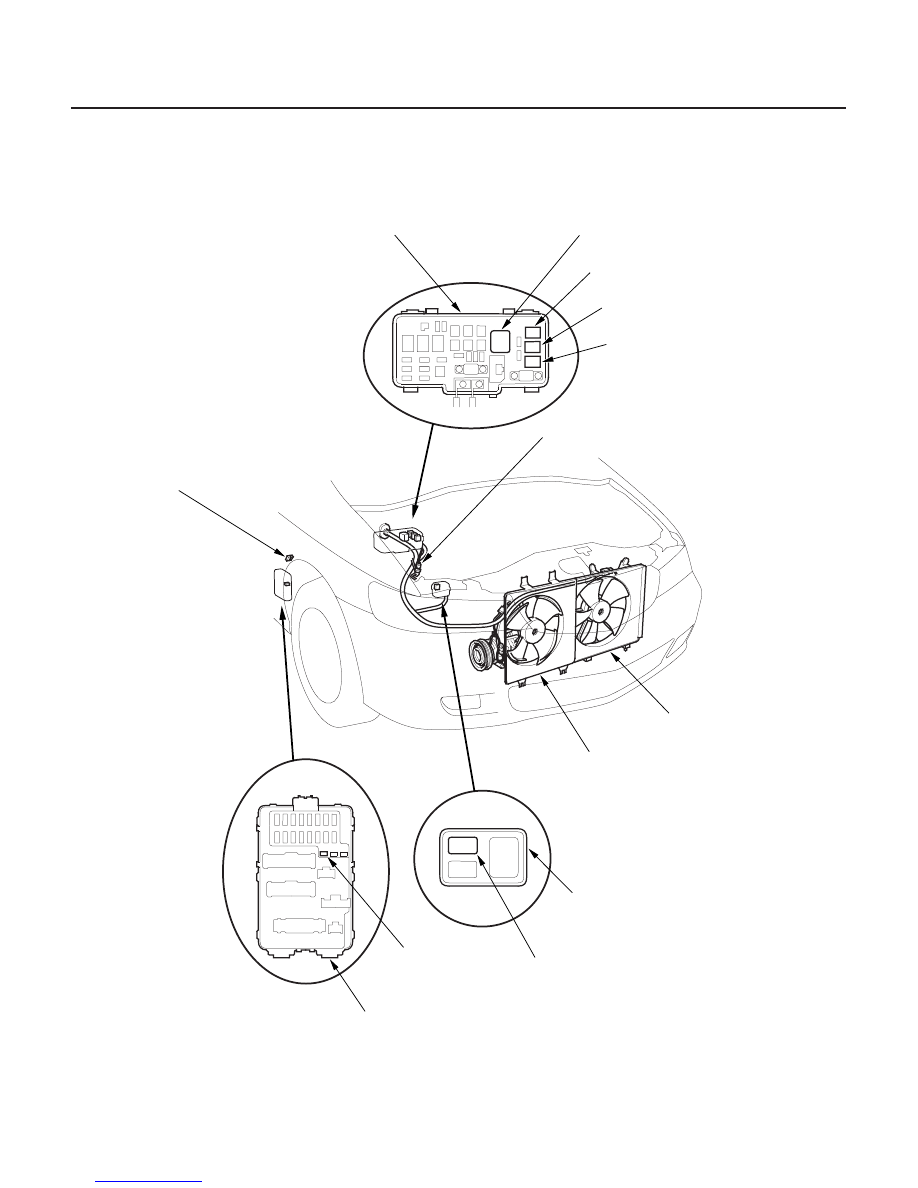Honda Odyssey 2004. Manual - part 382

*01
21-4
Heating/Air Conditioning
Component Location Index (cont’d)
A/C PRESSURE SWITCH
RADIATOR FAN
CONDENSER FAN
A/C DIODE B,
A/C DIODE C
(Located under-dash,
taped to harness)
UNDER-HOOD FUSE/RELAY BOX
BLOWER MOTOR RELAY
CONDENSER FAN RELAY
RADIATOR FAN RELAY
A/C COMPRESSOR CLUTCH RELAY
ABS RELAY BOX
FAN CONTROL RELAY
A/C DIODE A
PASSENGER’S UNDER-DASH FUSE/RELAY BOX
Test, page 22-88
Test, page 22-88
Test, page 22-88
Test, page 22-88
Test, page 22-88
03/07/29 10:09:39 61S0X050_210_0005